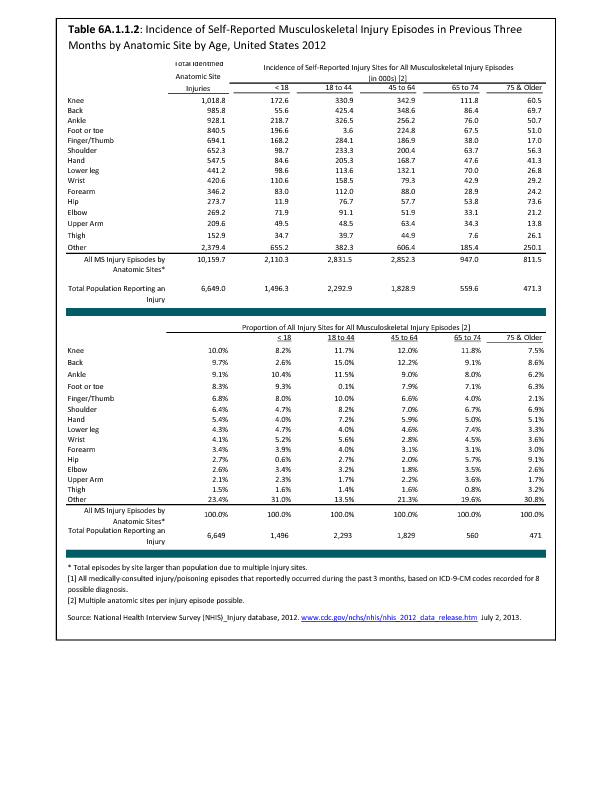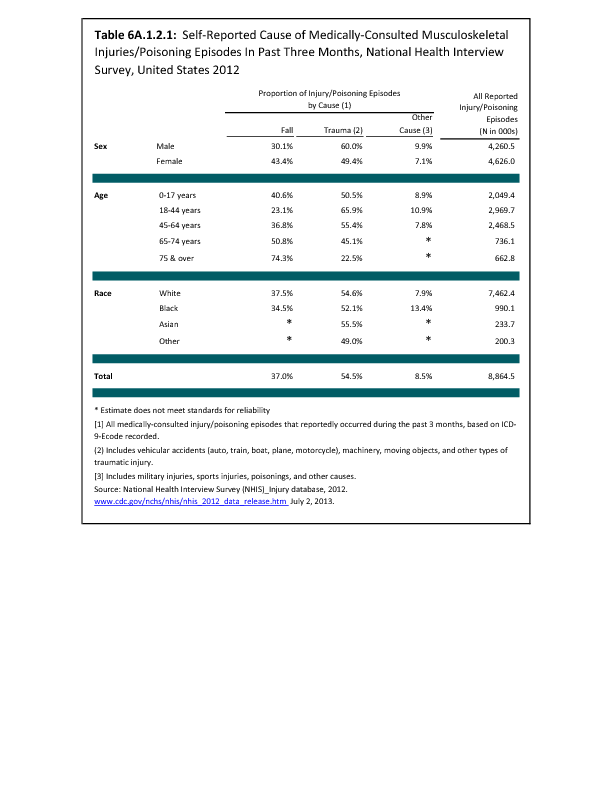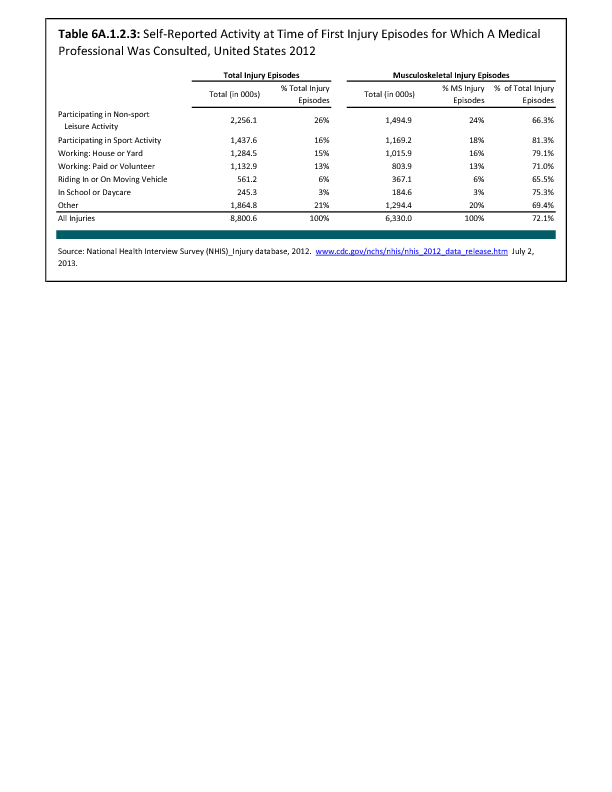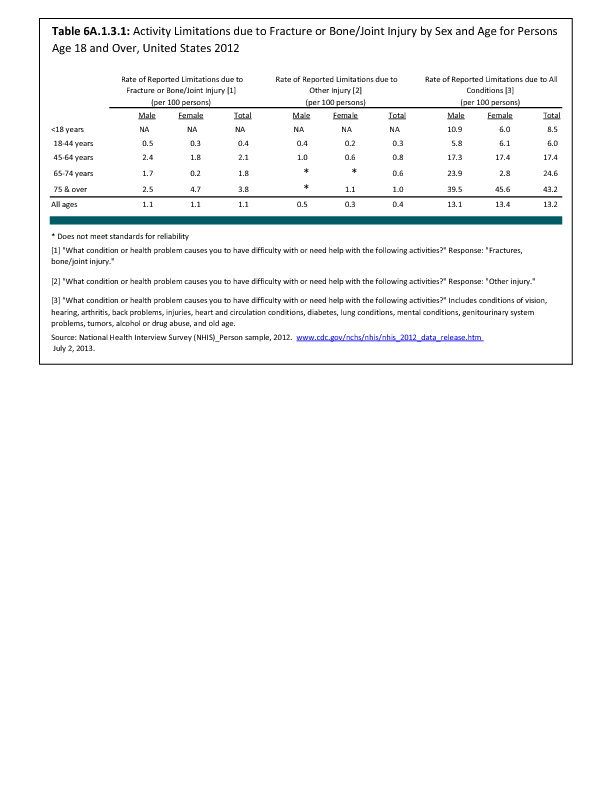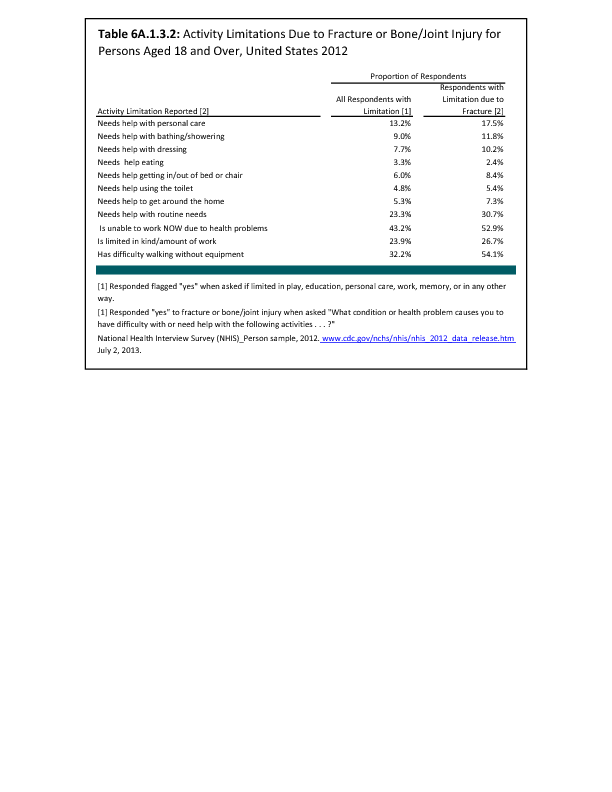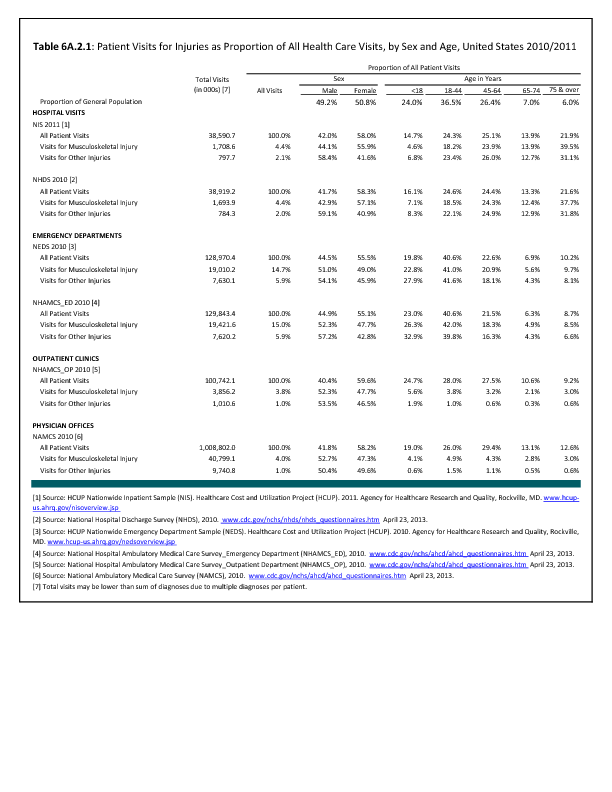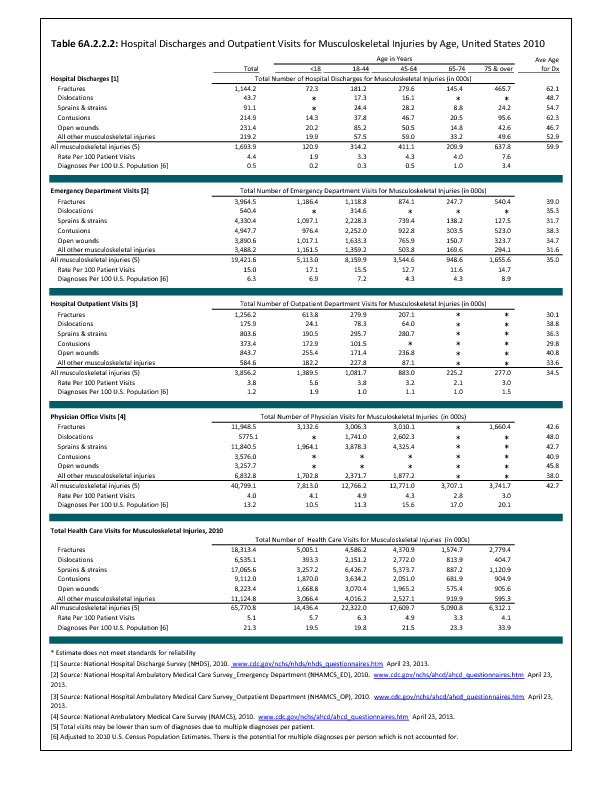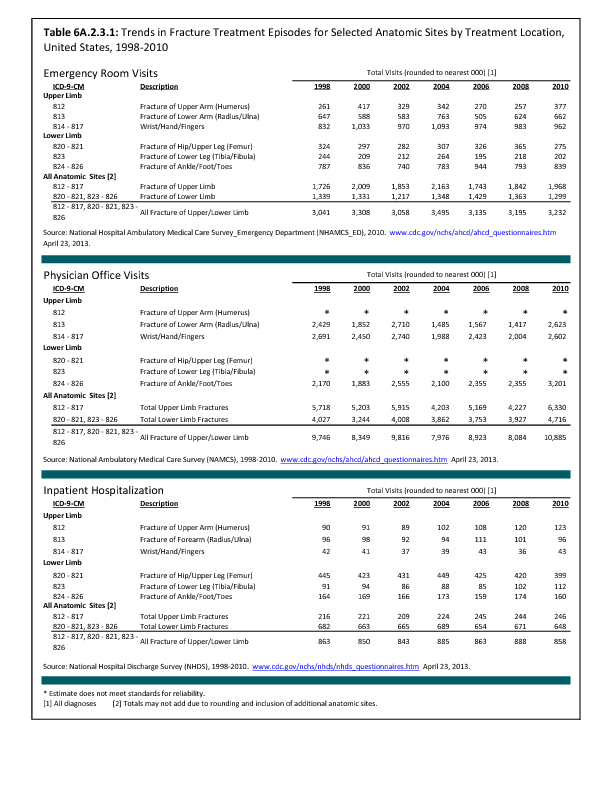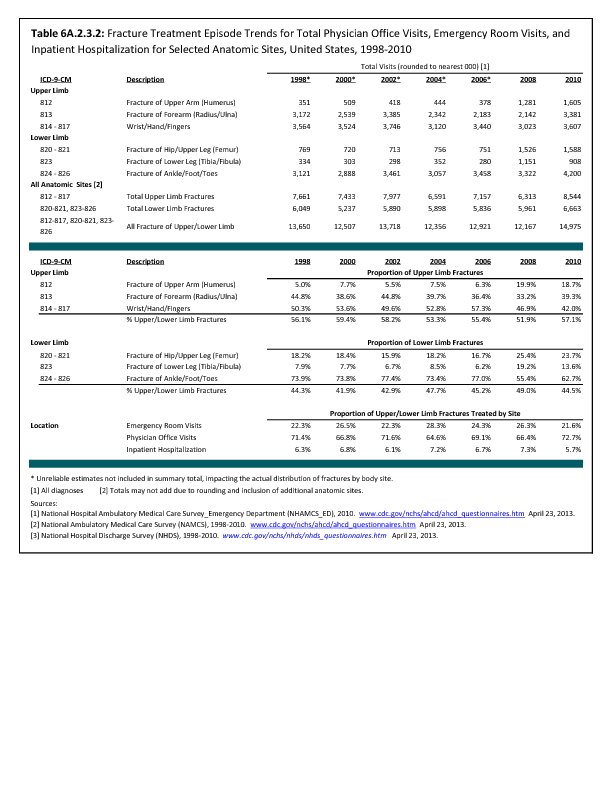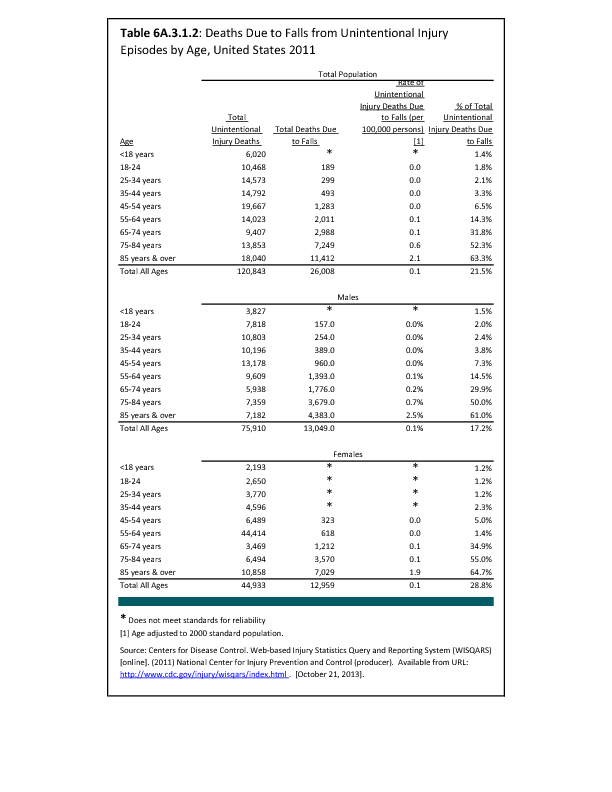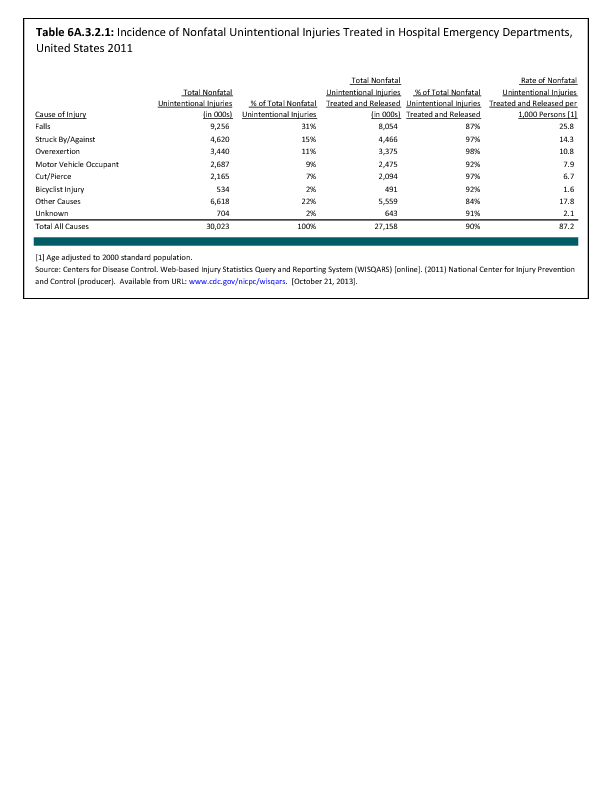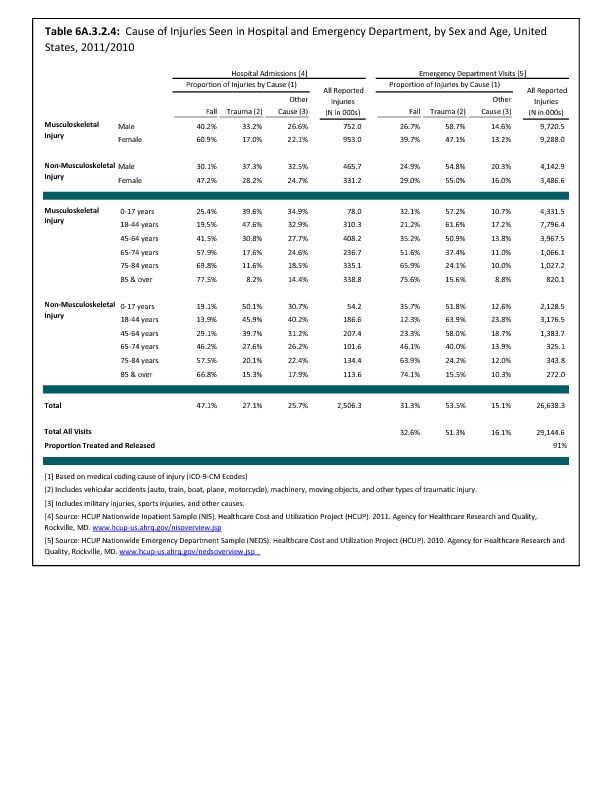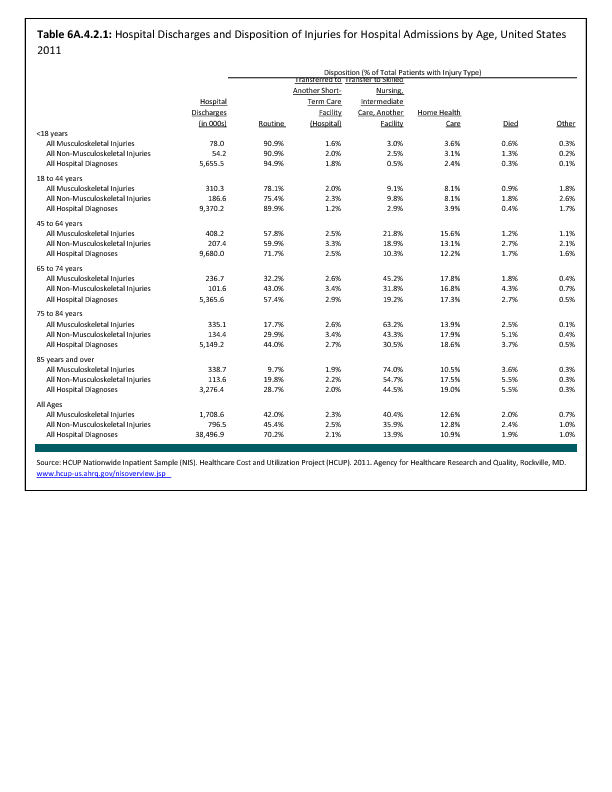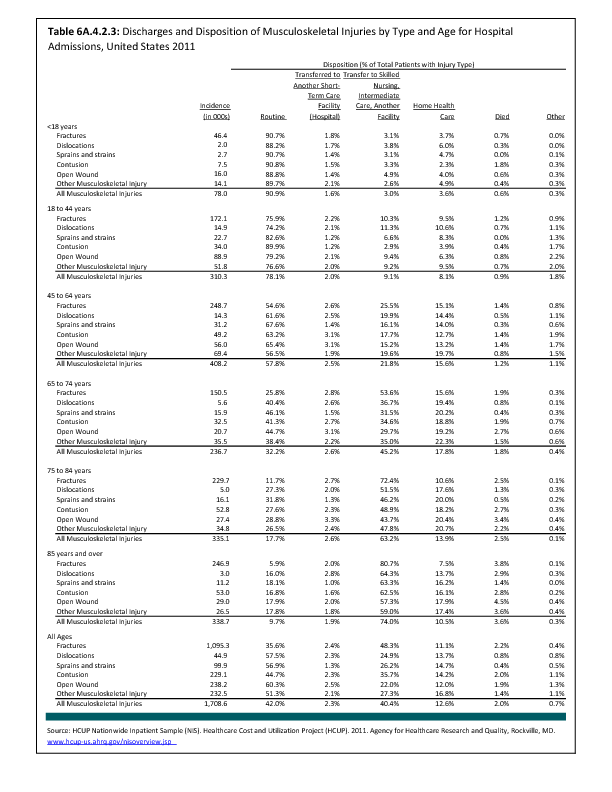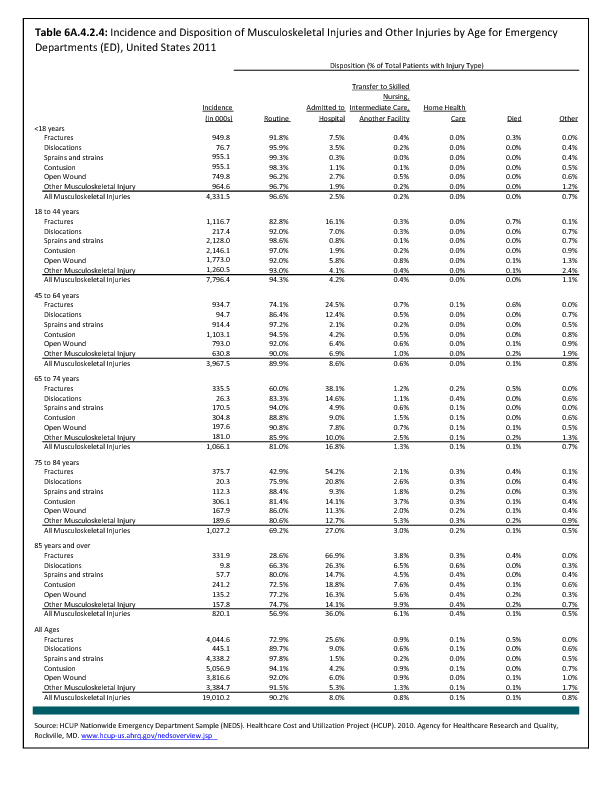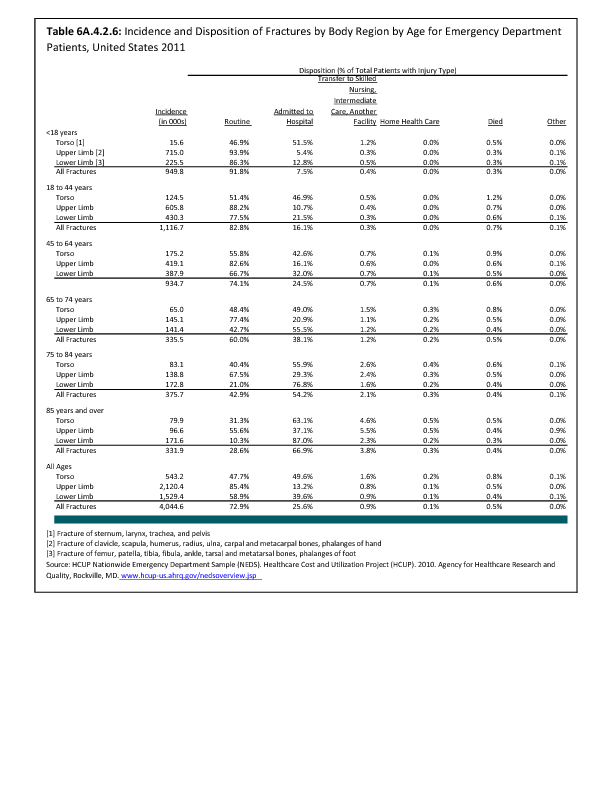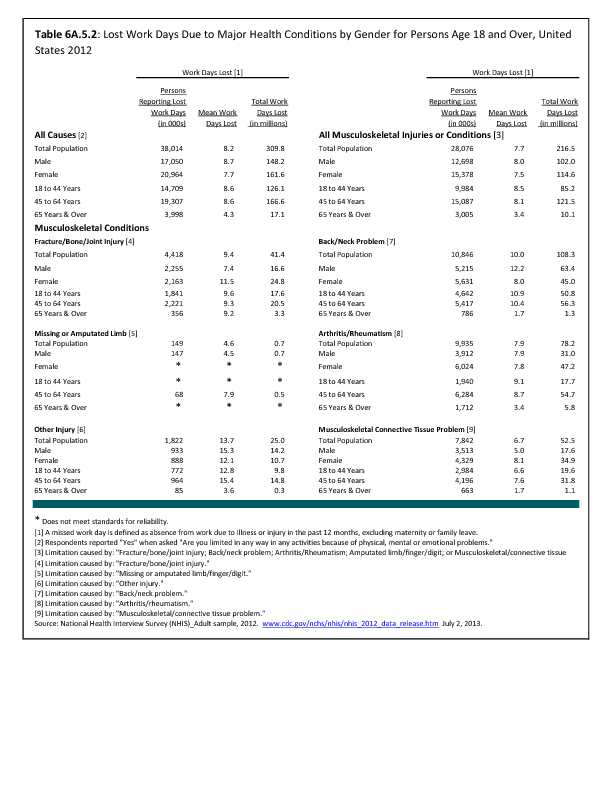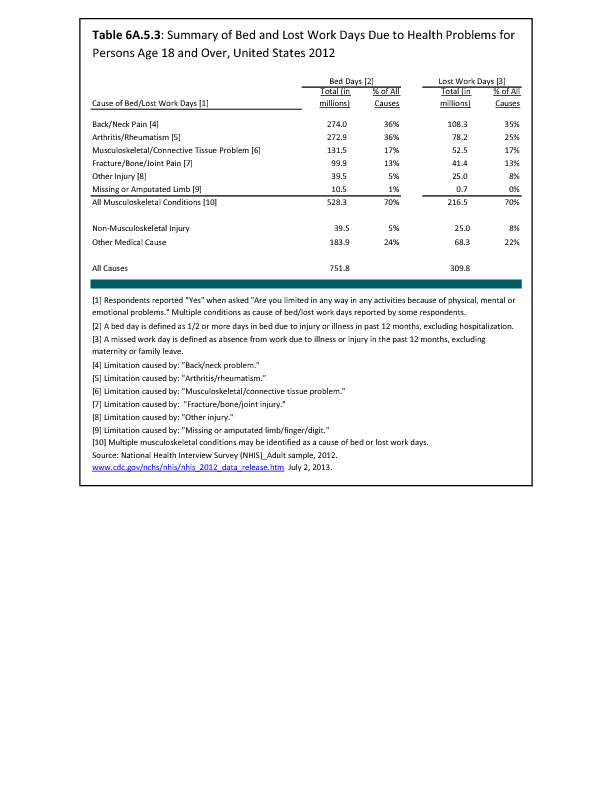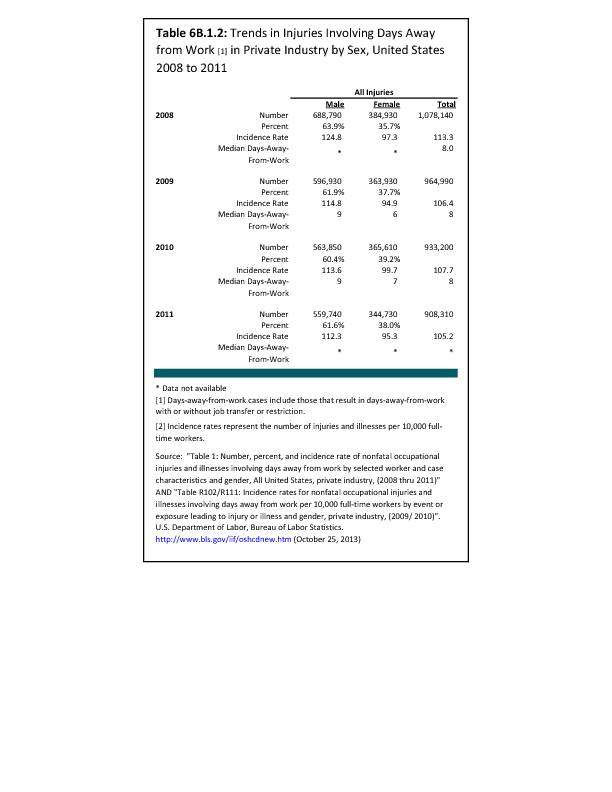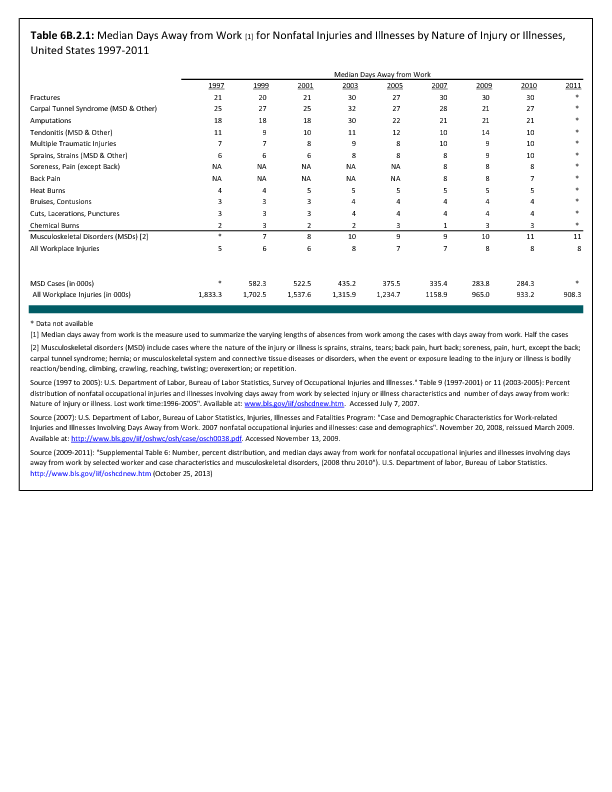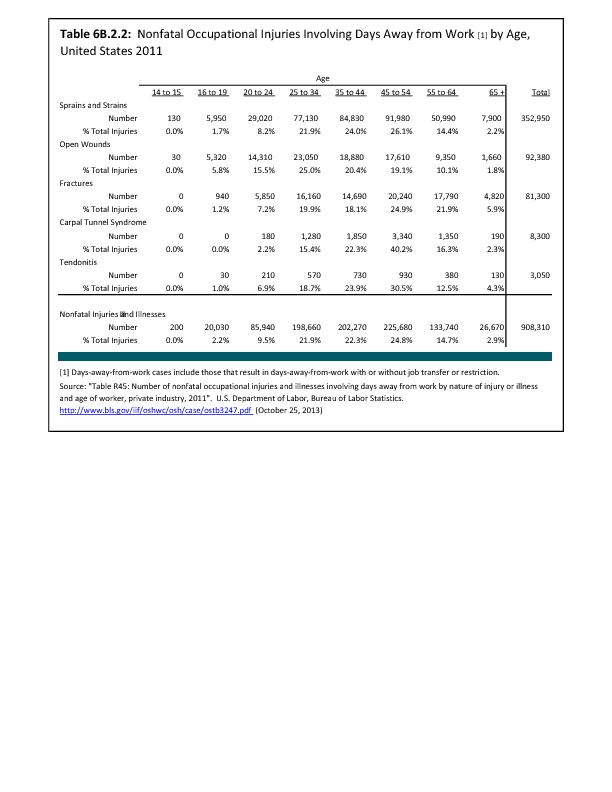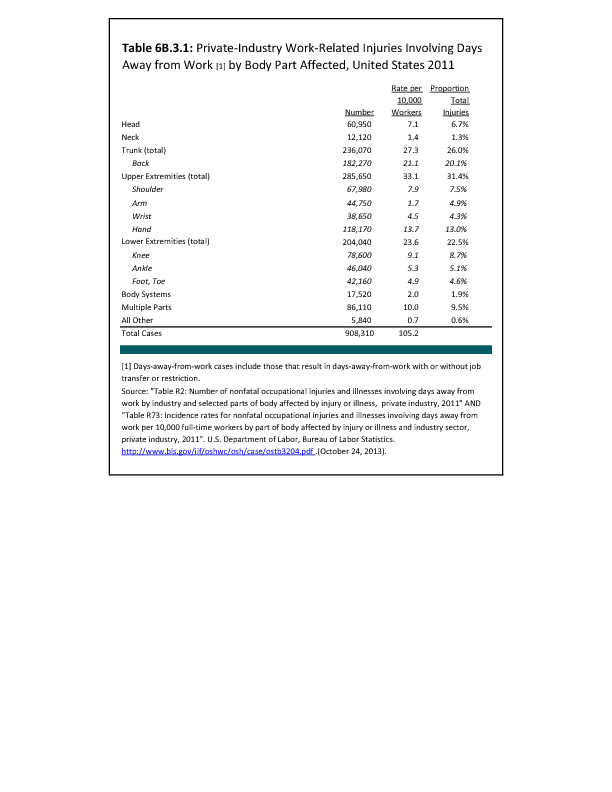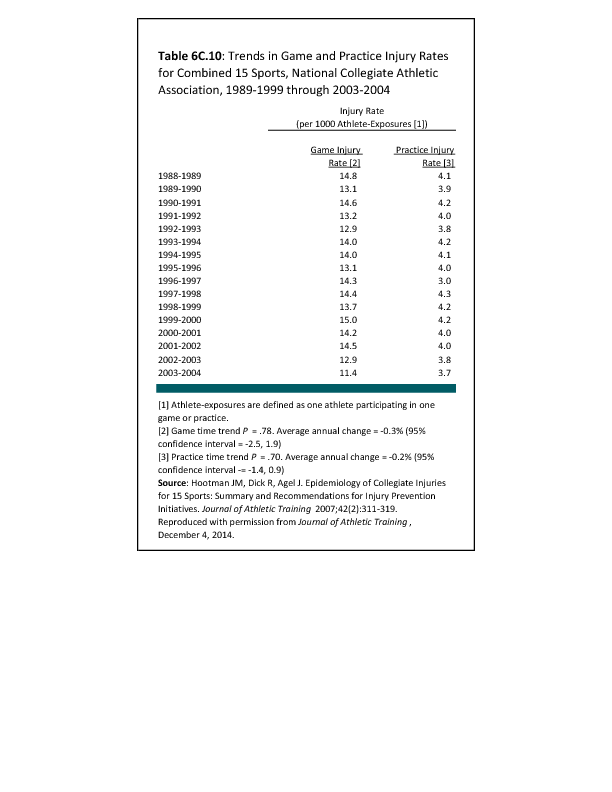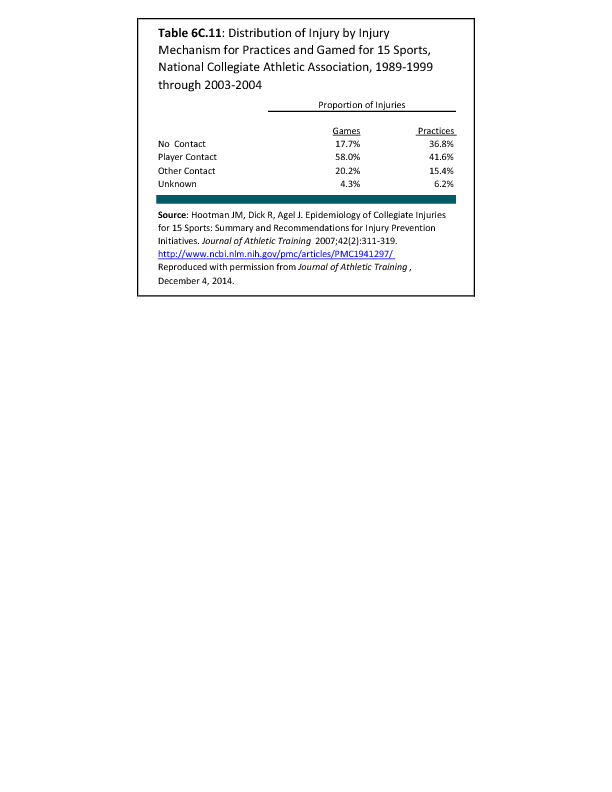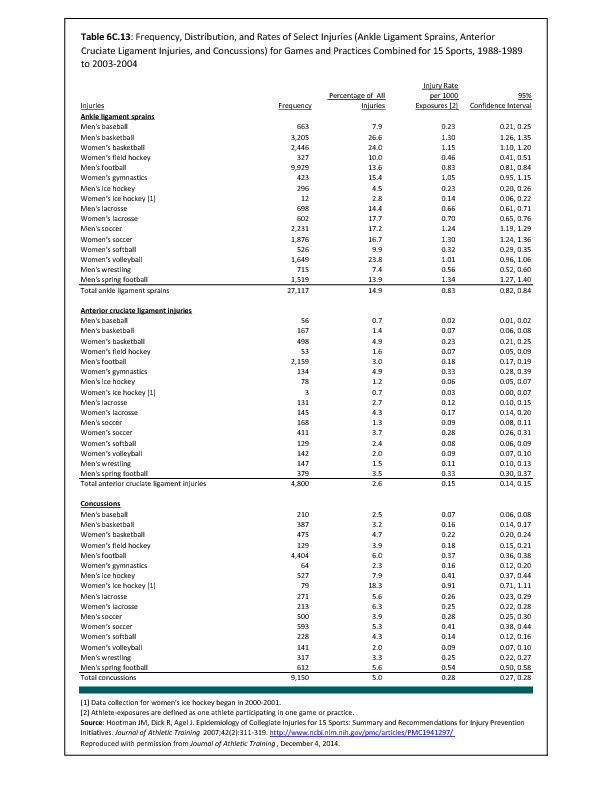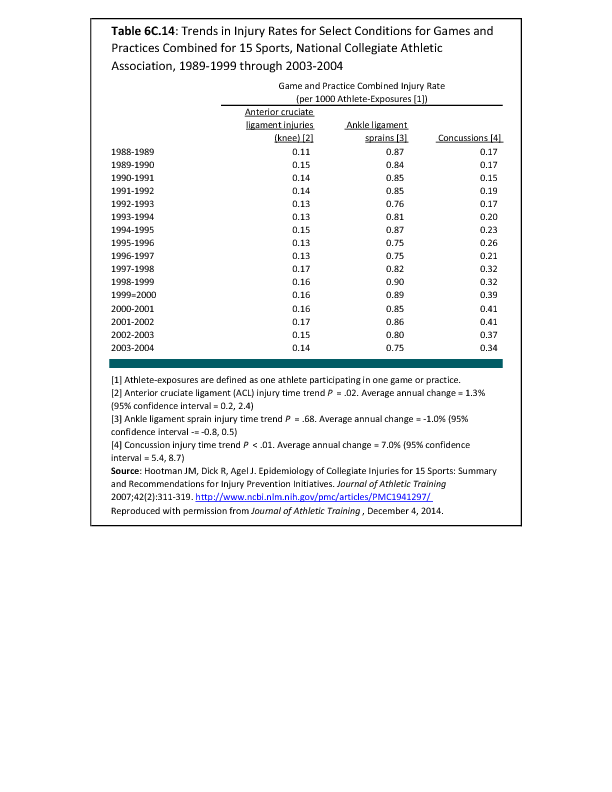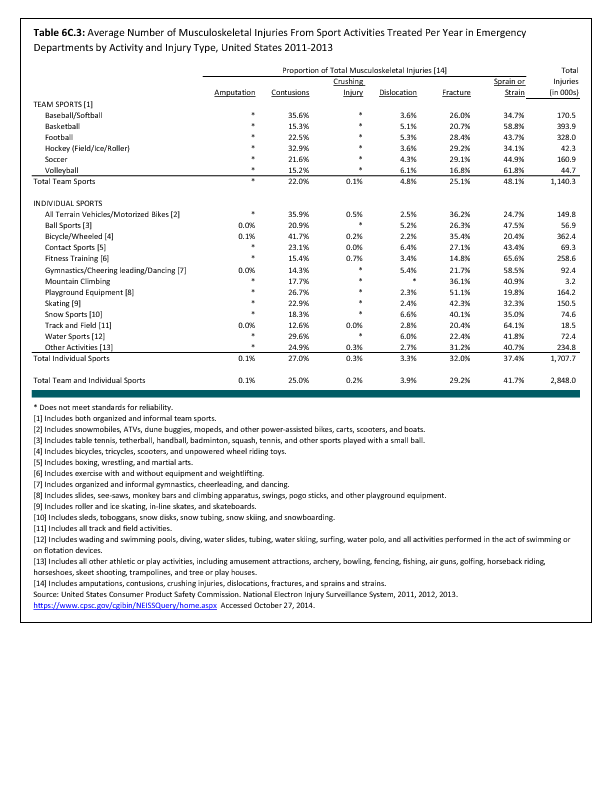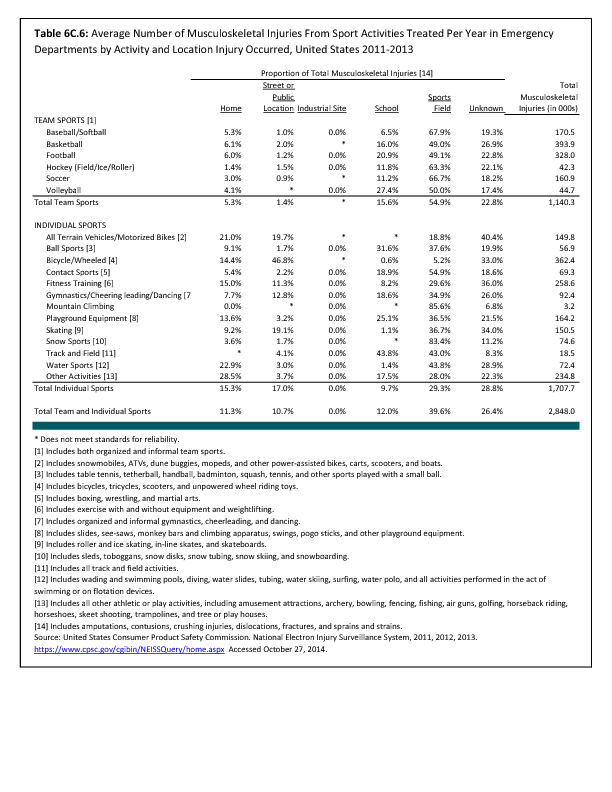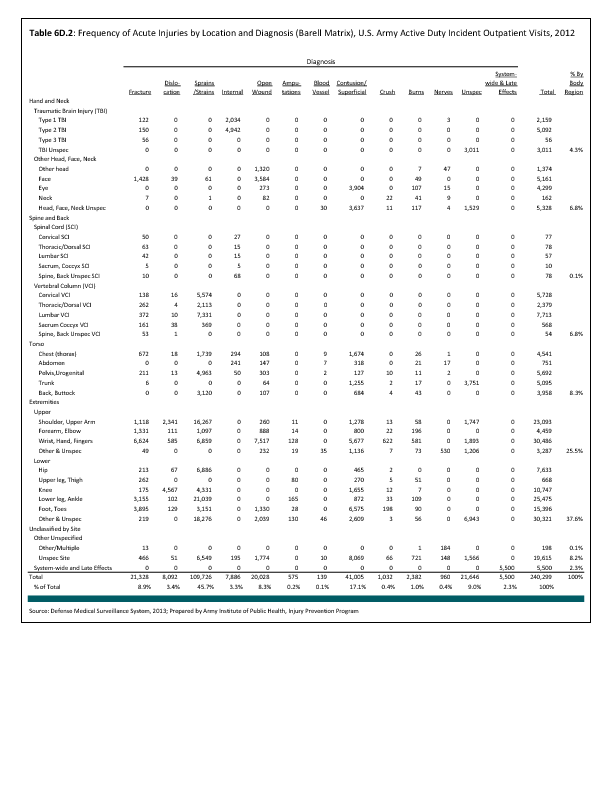An estimated 30 million children and adolescents participate in organized sports. In addition, some 150 million adults participate in physical activity that is not related to their employment. However, both of these large at-risk populations lack a mechanism for tracking injuries.
While professional and collegiate athletics have epidemiologic systems in place to track injury patterns, recreational athletics lack any type of surveillance system. However, the US Consumer Product Safety Commission has established the National Electronic Injury Surveillance System (NEISS) in 1997 to track emergency room visits and injury patterns associated with specific products. This database has also been helpful as a means of documenting injuries associated with athletic endeavors.
Using the data, a 2002 CDC report detailed 4.3 million sports- and recreation-related injuries that were treated in US Eds.1 Injury rate was highest for boys aged 10 to 14 years. A more recent paper documented an estimated 600,000 knee injuries annually in EDs in the United States. Of these, 49.3% resulted from sports and recreation activities.2
An estimated 2.8 million injuries resulting from individual sports are reported annually in EDs in the United States, of which 64% are musculoskeletal. Two out of three musculoskeletal injuries occur in males, with the proportion slightly lower for individual sports than for team sports.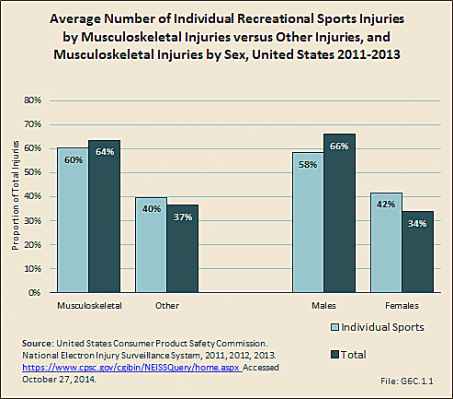
Cycling and wheeled sports account for 22% of all recreational sports injuries and musculoskeletal injuries serious enough to warrant a visit to the ED. Fitness training results in additional 16% of the total injuries and musculoskeletal injuries seen. Musculoskeletal injuries account for more than one-half of all injuries in all sports, with the exception of water sports. (Reference Table 6C.1 PDF CSV)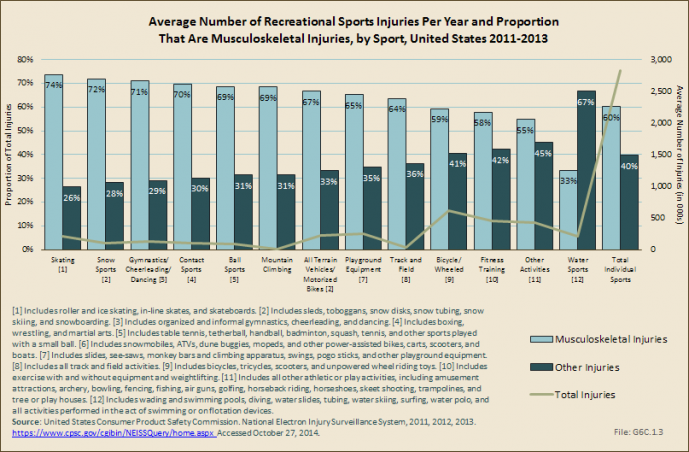
Musculoskeletal injuries treated in the ED as a result of a recreational sport injury occur in the highest proportion in children aged 2 to 12 years. This is in large part due to the high number of playground injuries, as well as biking and other wheeled equipment such as skate boards and scooters. Adults between the ages of 25 and 44 account for a substantial proportion of treated musculoskeletal injuries, but they also are a larger share of the population and more likely to be active in recreational sport activities. (Reference Table 6C.2 PDF CSV)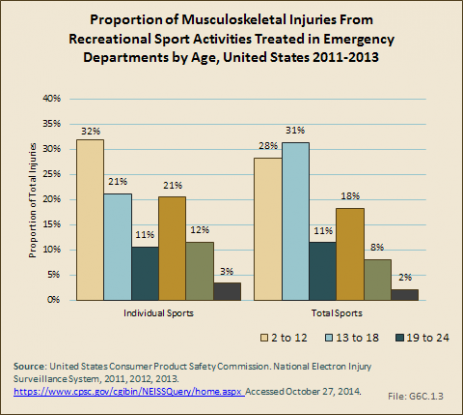
An estimated 37% of musculoskeletal injuries from athletic mechanisms result in sprains or strains, while fractures comprise 32% and contusions 27%. (Reference Table 6C.3 PDF CSV)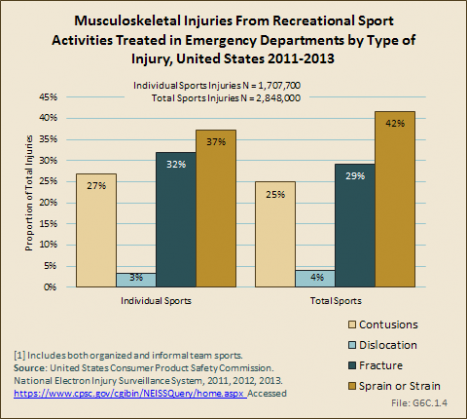
Injuries to the extremities are the most common, with 41% occurring in the upper extremity, compared with 34% in the lower extremity. The trunk sustains most of the remaining injuries, with less than 7% involving the head. (Reference Table 6C.4 PDF CSV; Table 6C.7 PDF CSV)
Nearly all sports injuries seen in the ED are treated and released to home. Fewer than 4% of recreational sports injuries result in hospitalization. Injuries from all-terrain vehicles and motorized bikes result in the highest hospitalization rate (7%) among individual sports, followed by 5% for injuries from nonmotorized wheeled activities (bicycles, skateboards, scooters, etc.). About 1 in 25 playground injuries results in hospitalization. (Reference Table 6C.5 PDF CSV)
- 1. Centers for Disease Control and Prevention: Nonfatal sports- and recreation-related injuries treated in emergency departments—United States, July 2000–June 2001. MMWR Morb Mortal Wkly Rep 2002 Aug 23;51(33):736-740.
- 2. Gage BE, McIlvain NM, Collins CL, Fields SK, Comstock RD: Epidemiology of 6.6 million knee injuries presenting to United States emergency departments from 1999 through 2008. Academic Emergency Medicine 2012 Apr;19(4):378-385.
Edition:
- 2014

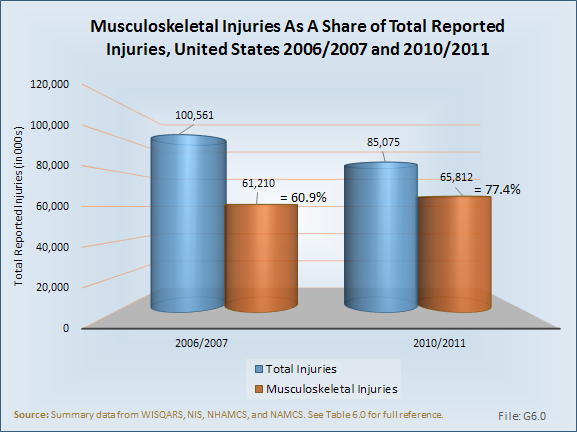
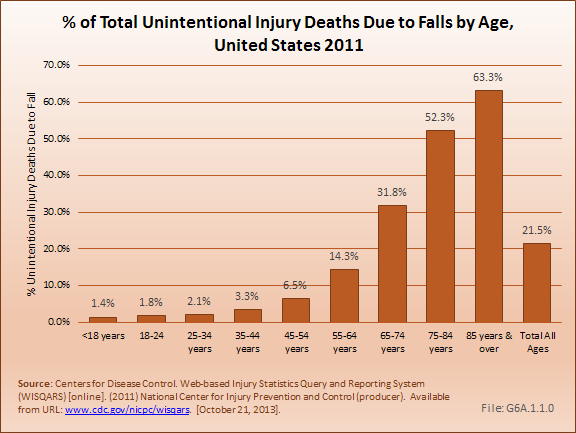
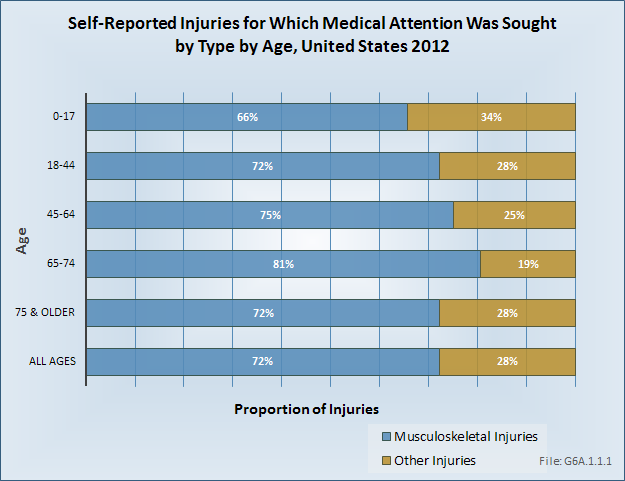
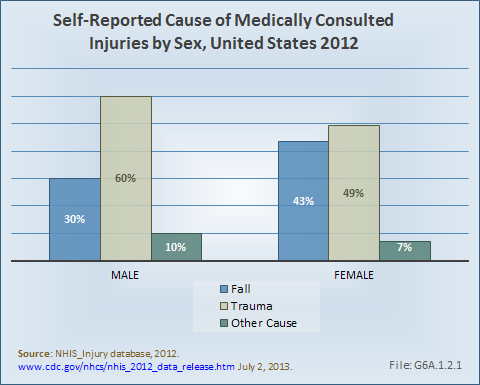
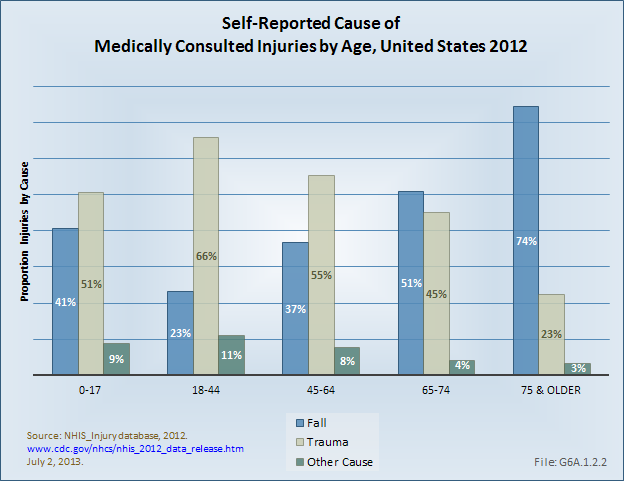
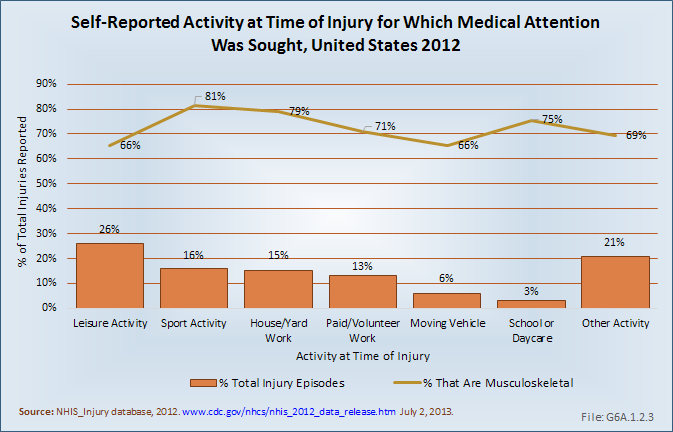
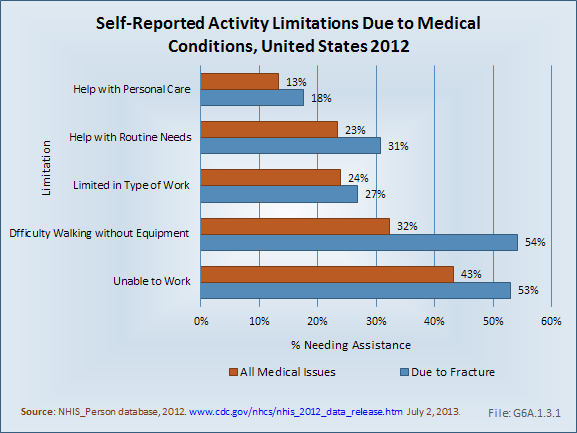
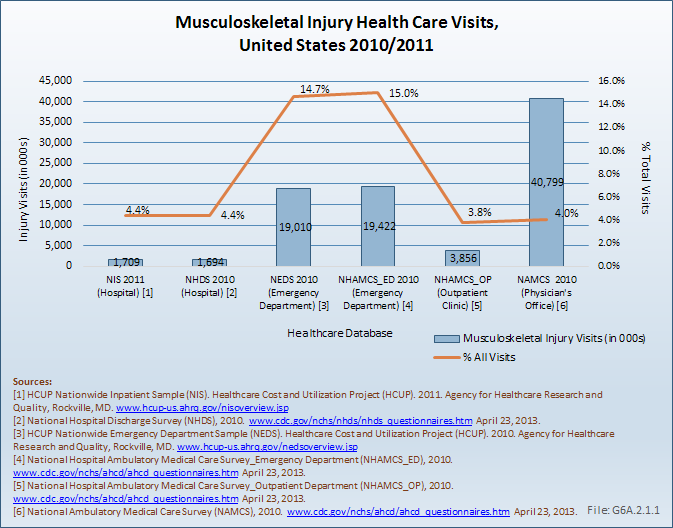
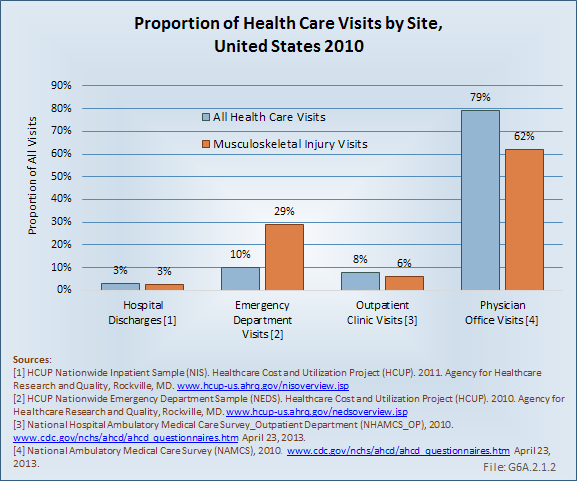
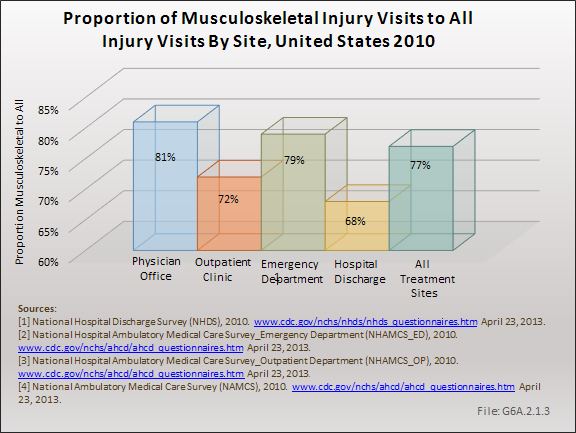
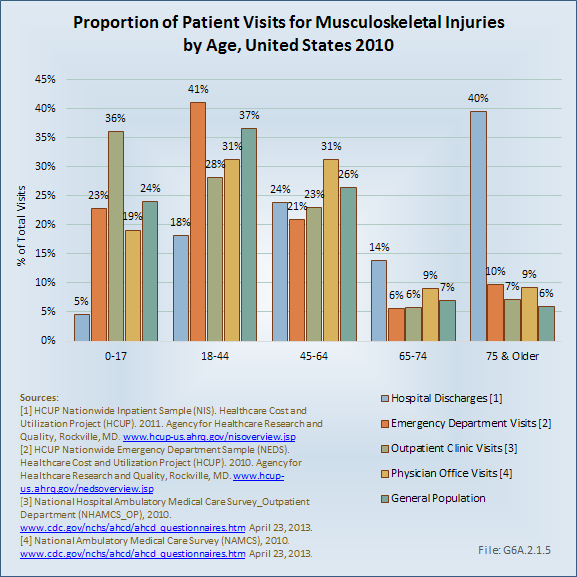
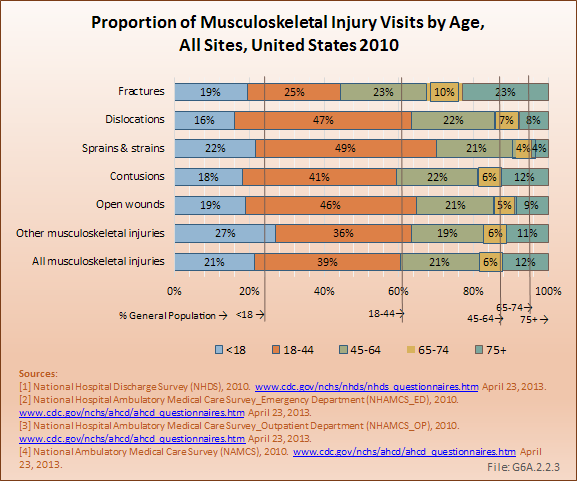
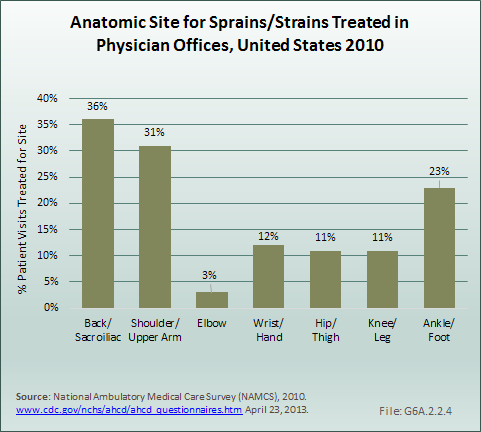
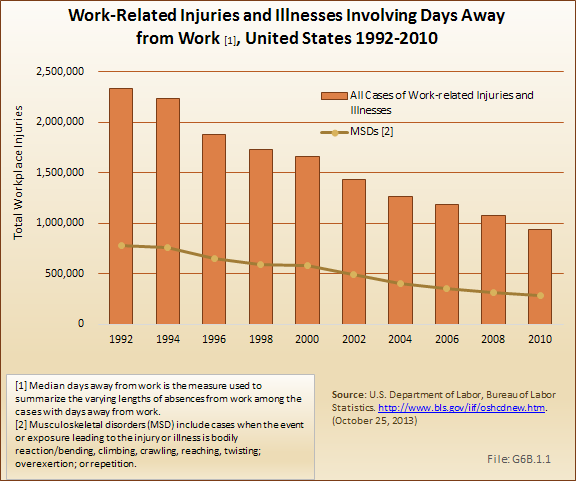
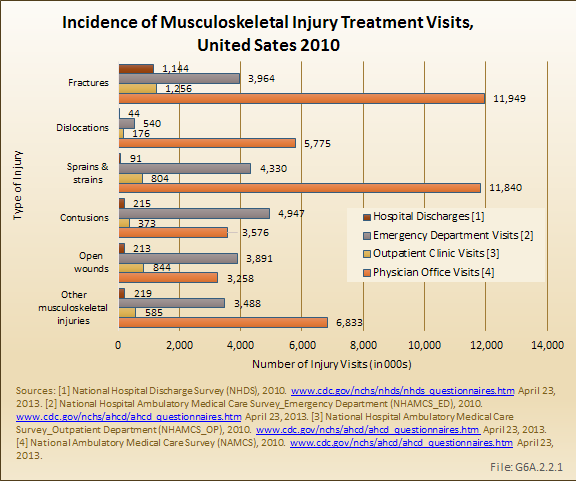
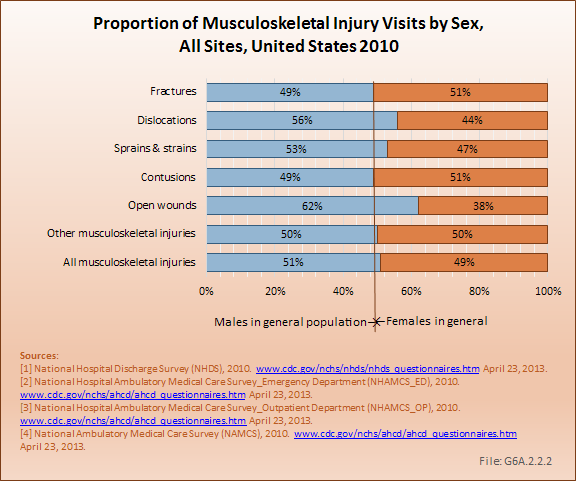
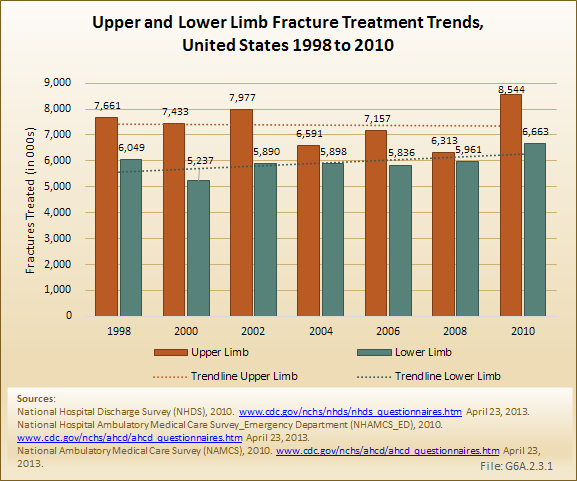
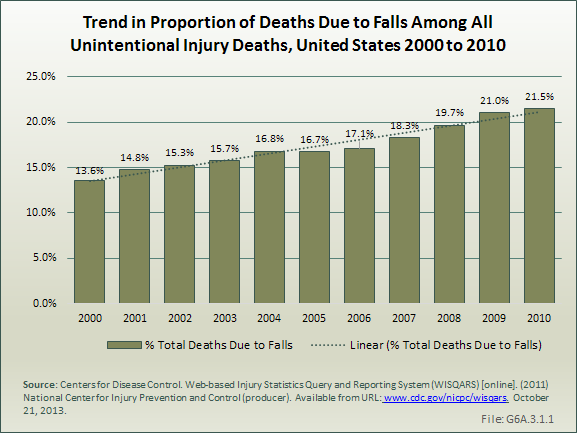
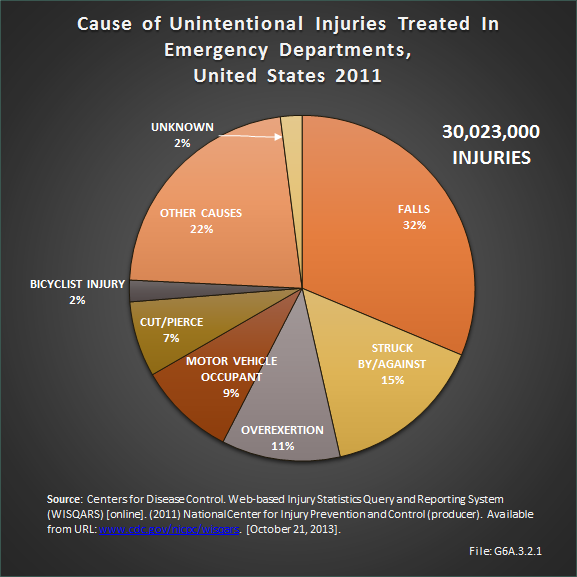
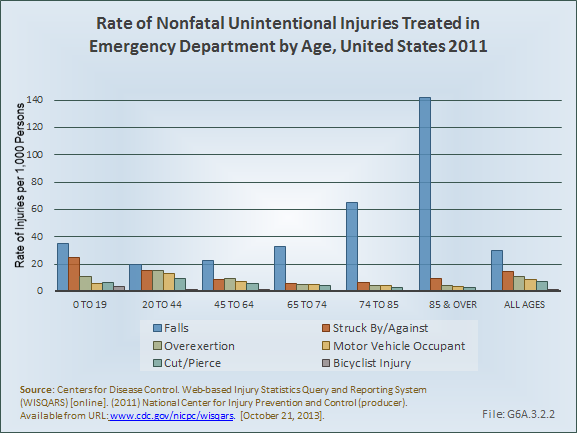
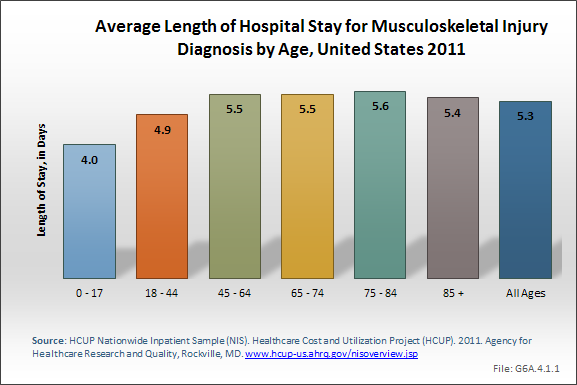
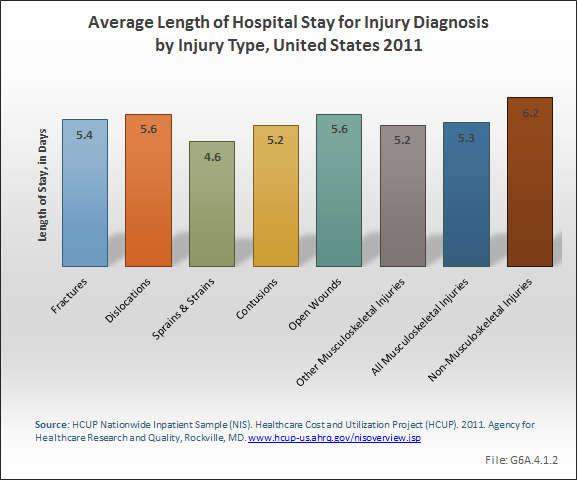
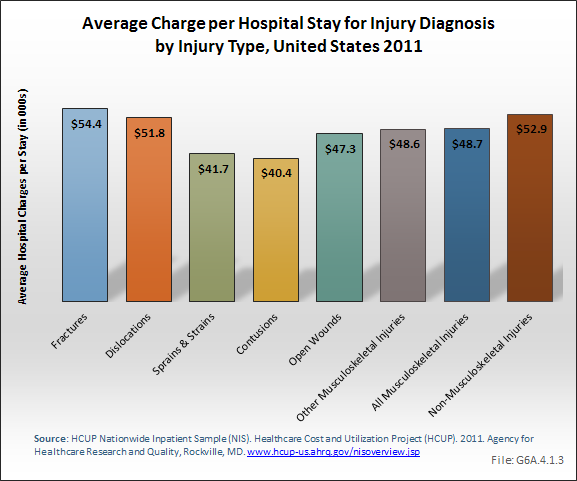
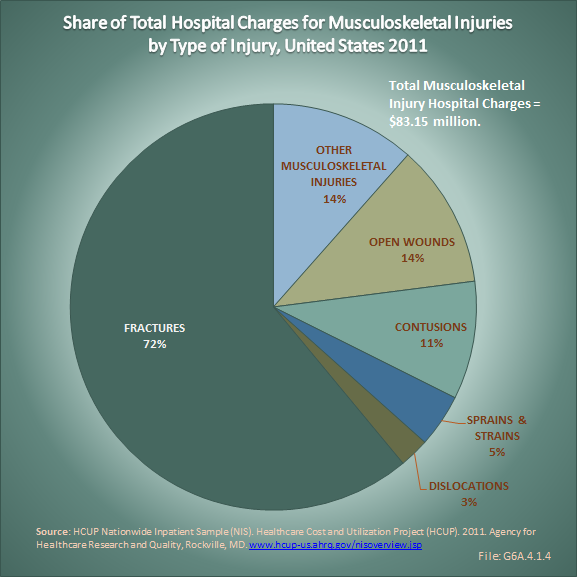
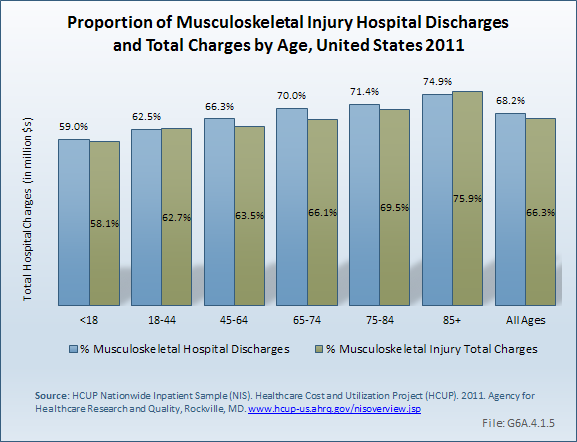
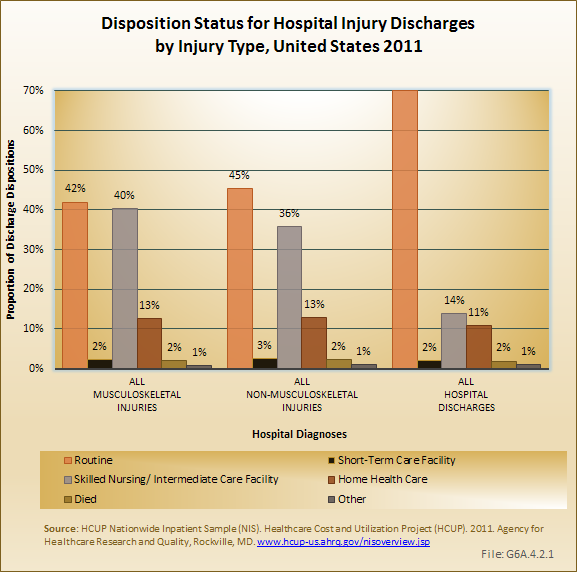
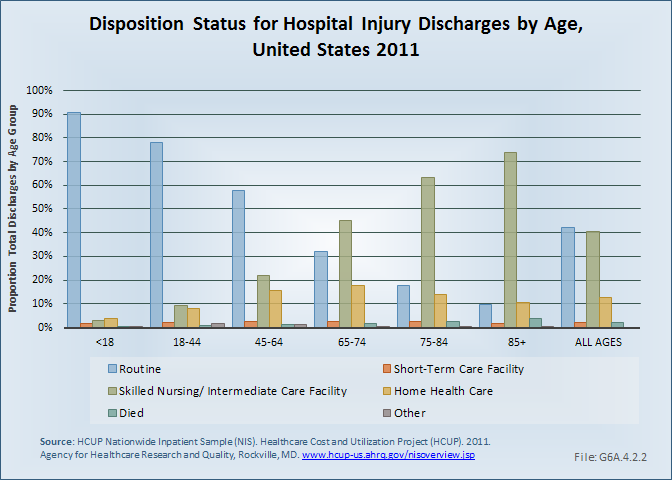
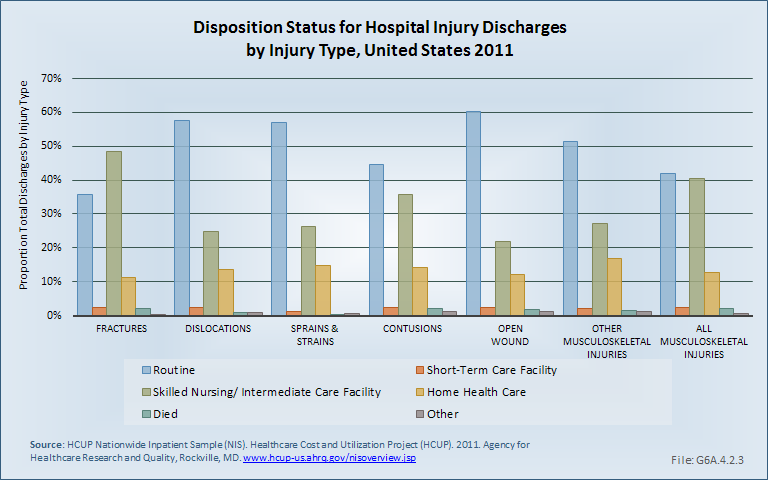
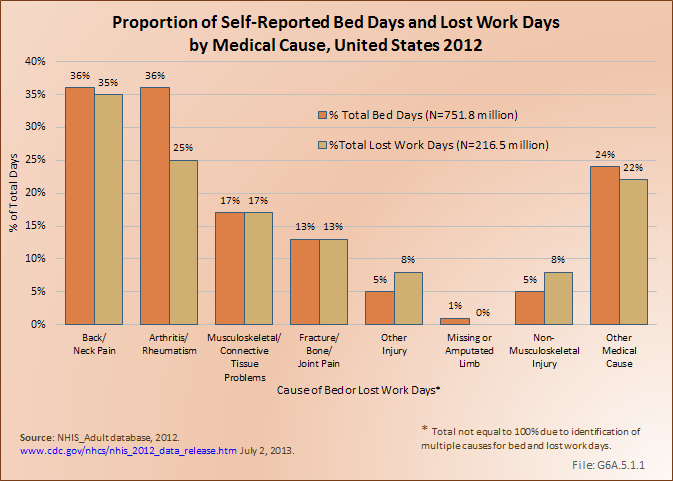
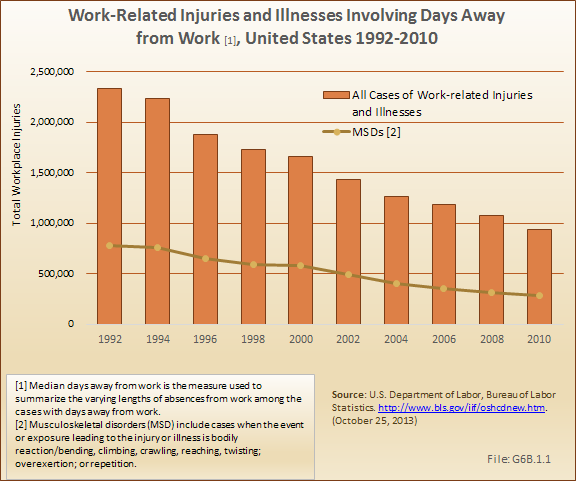
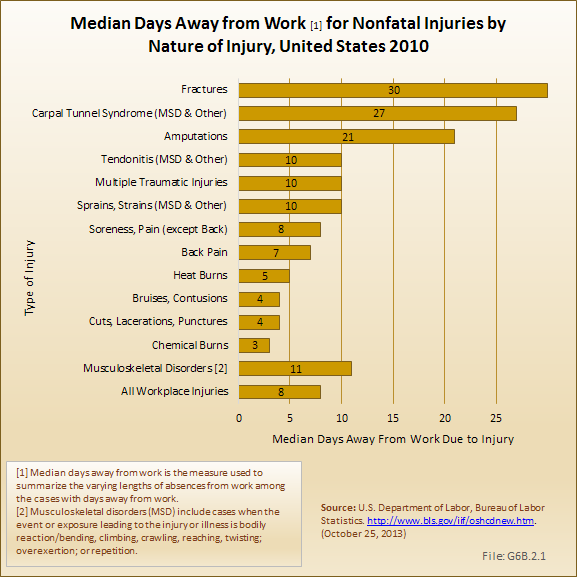
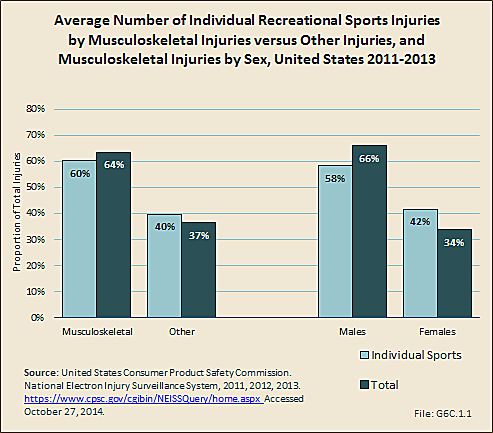
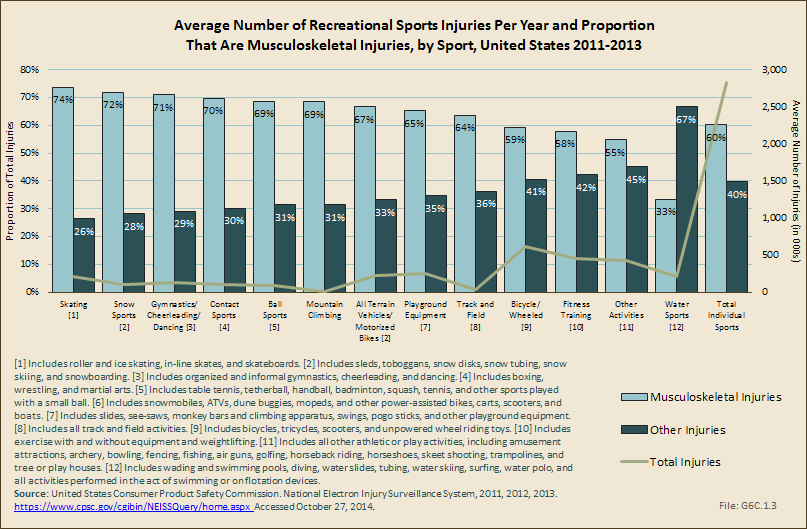
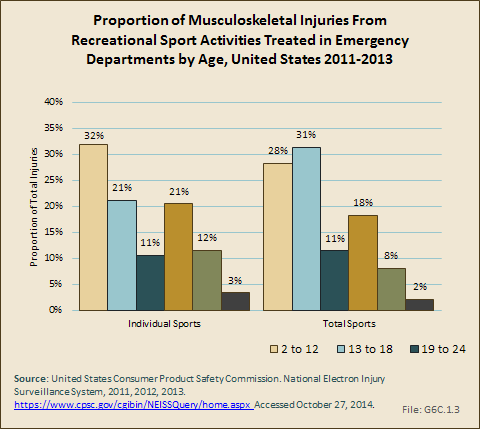
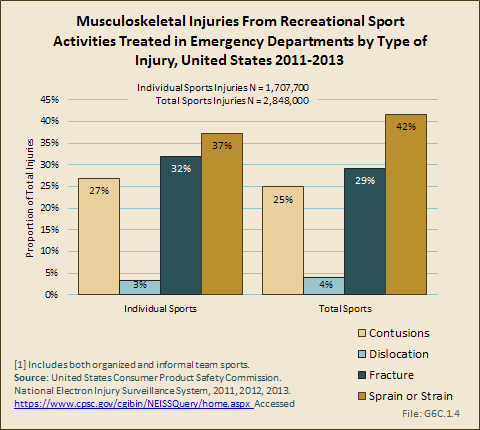
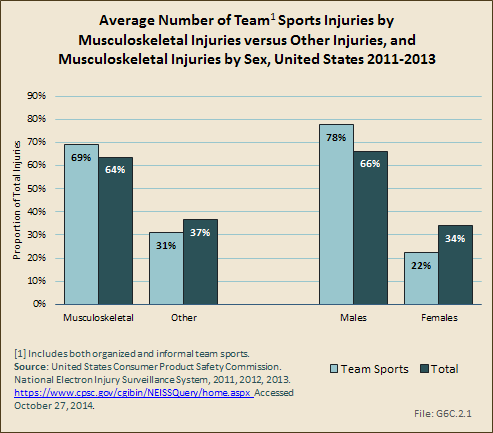
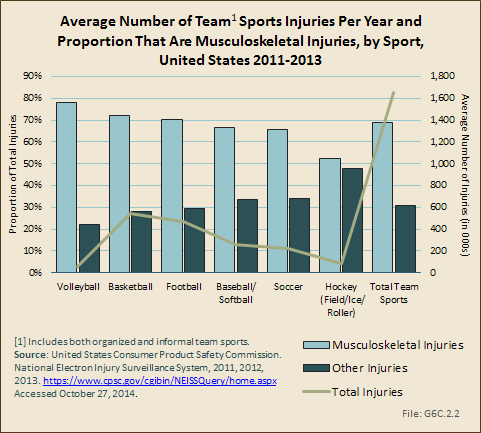
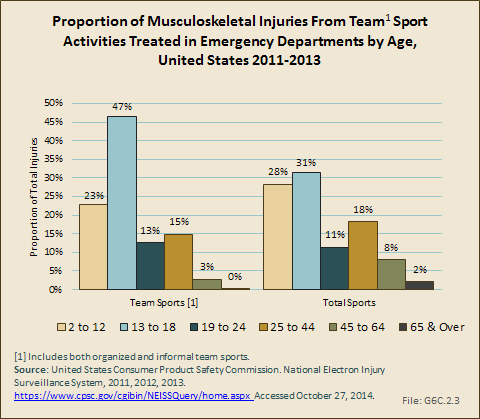
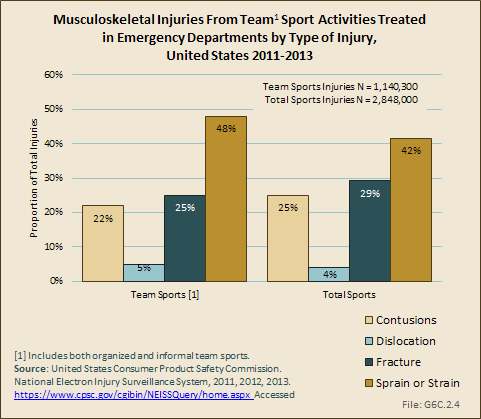
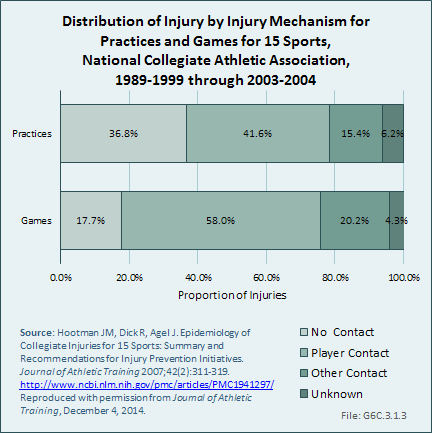
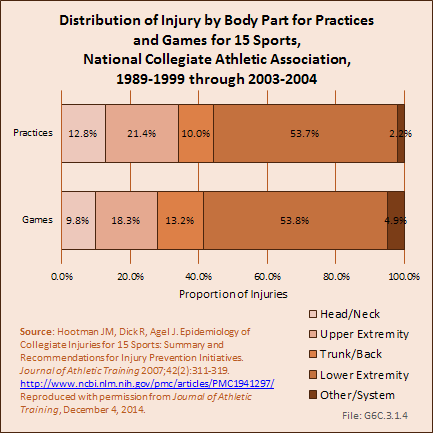
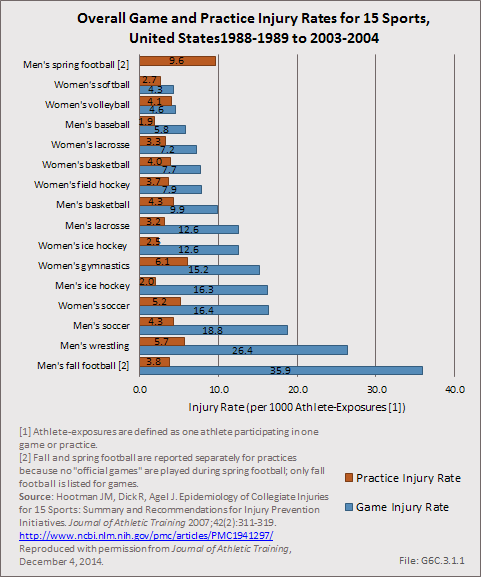
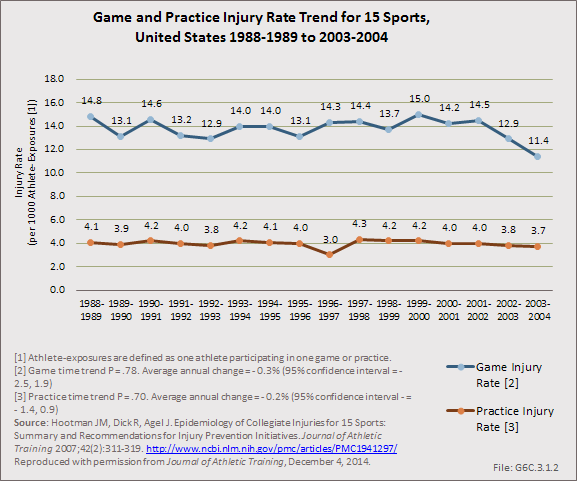
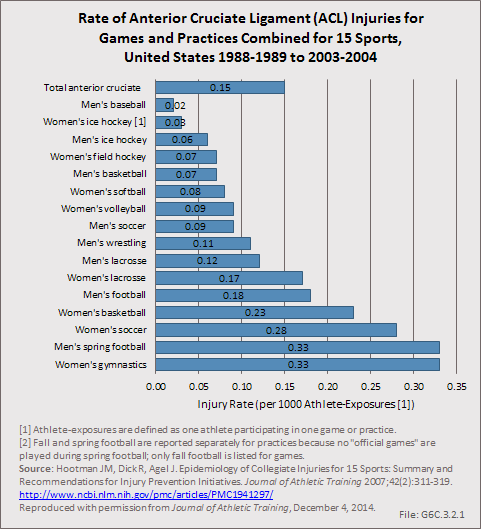
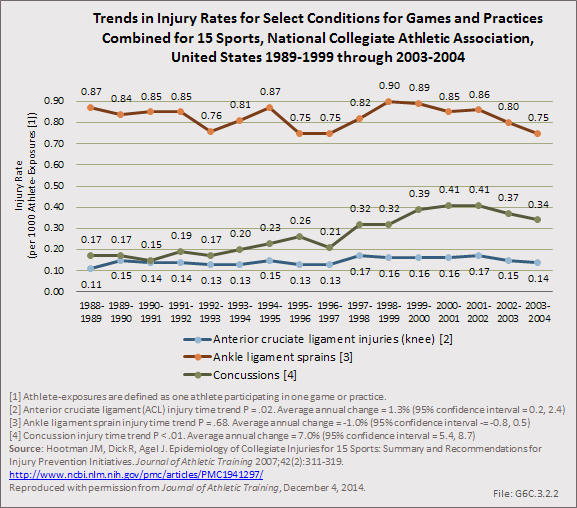
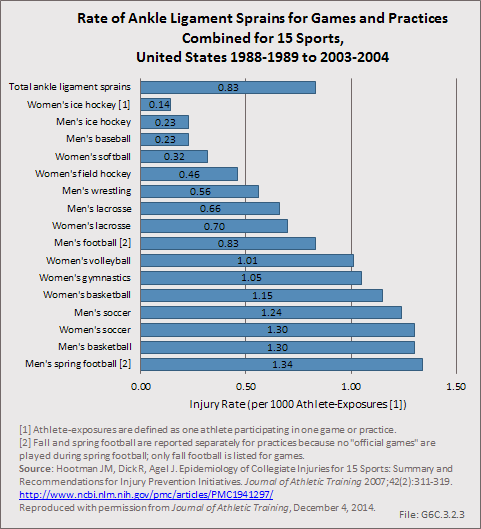
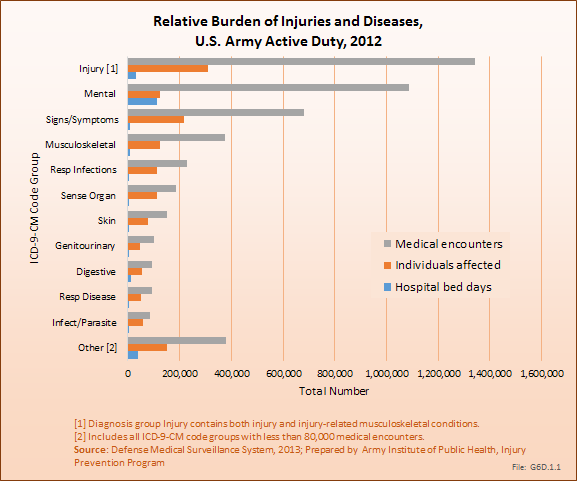
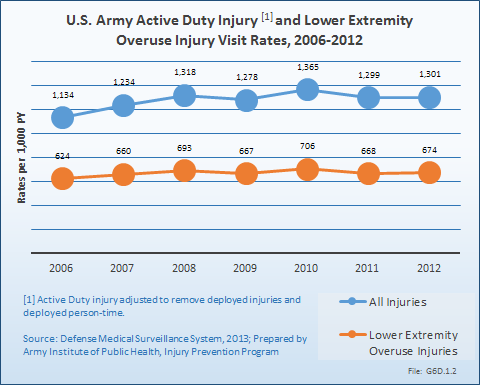

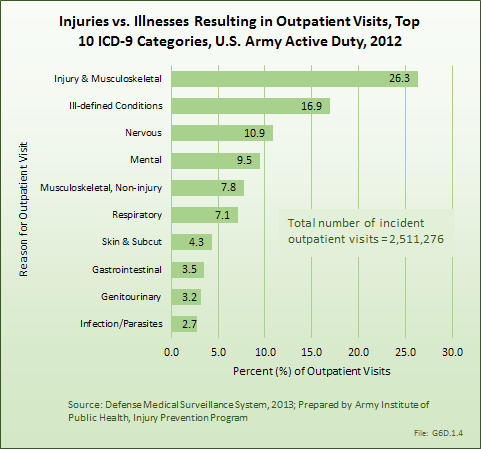
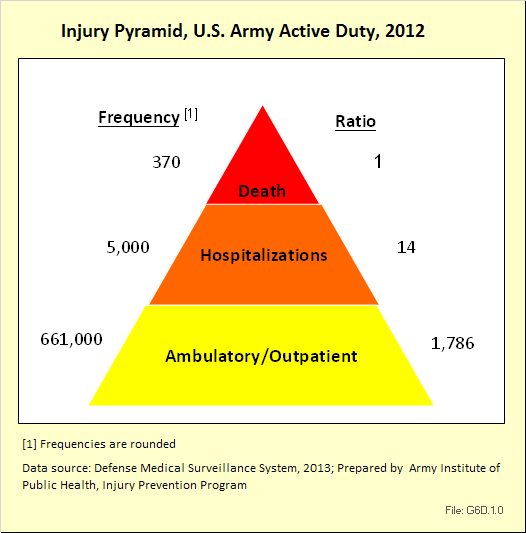
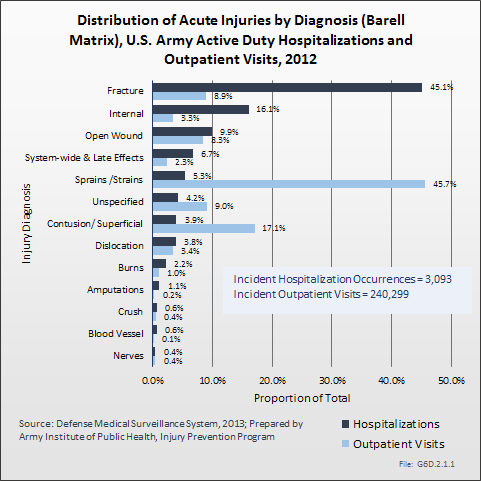
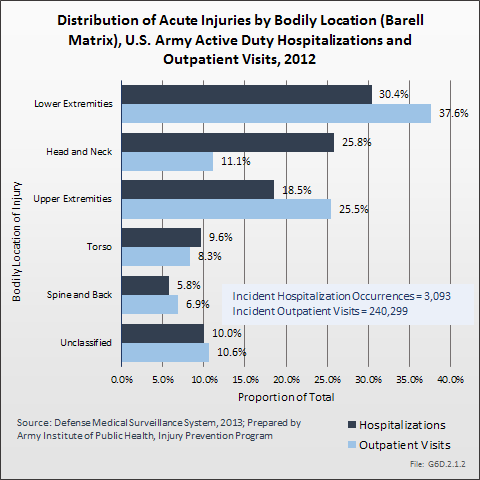
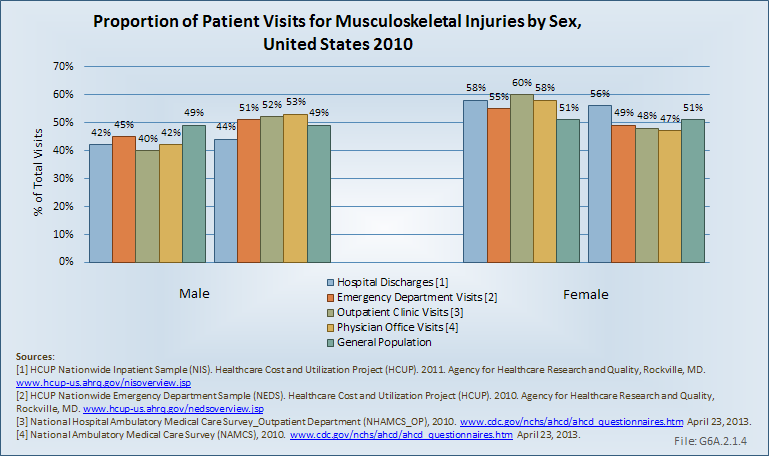
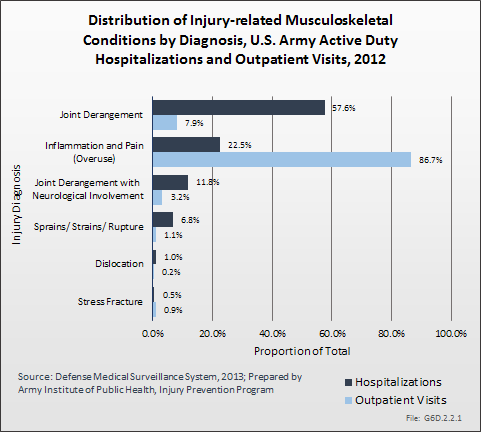
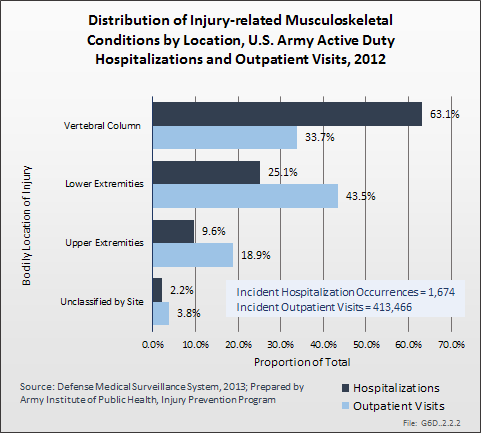
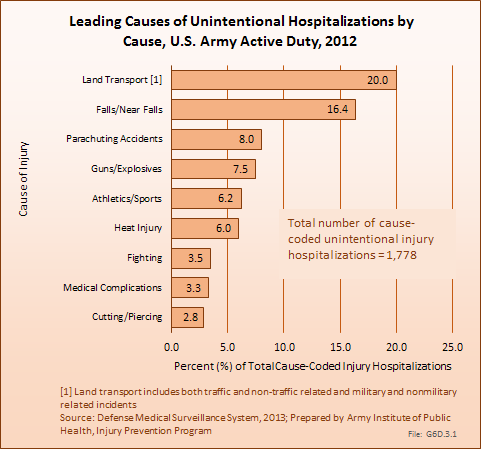
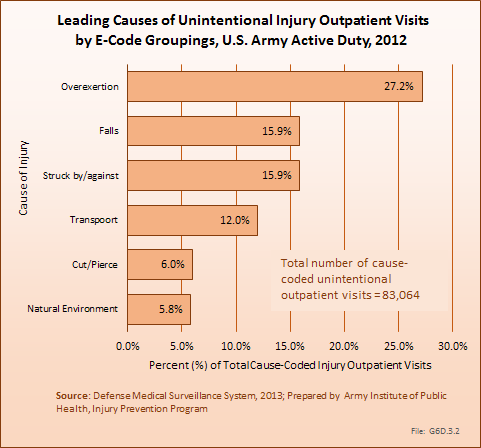
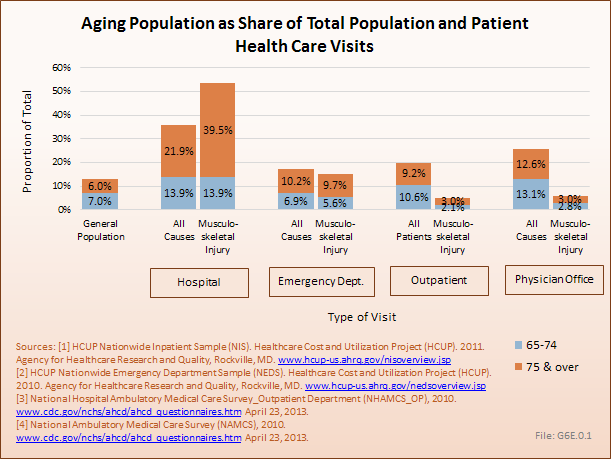
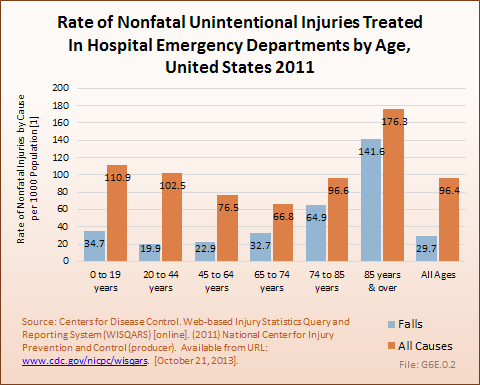
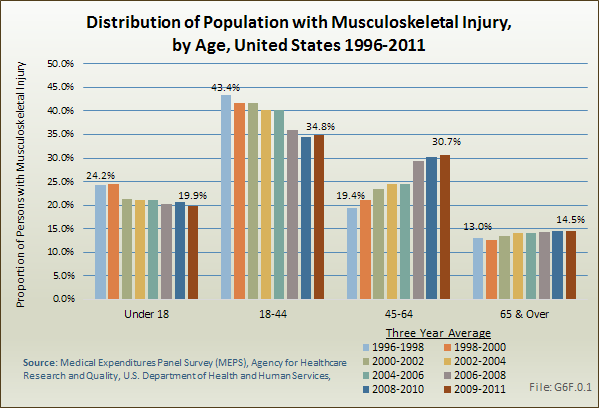
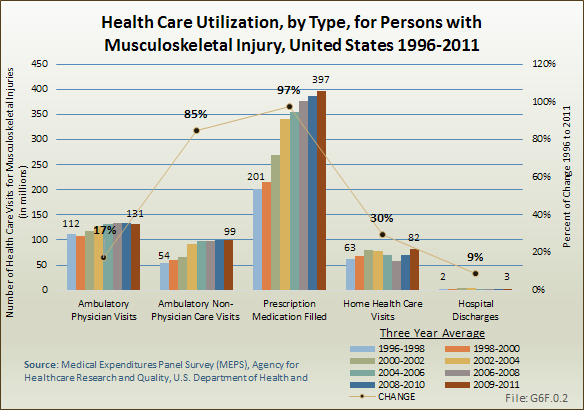
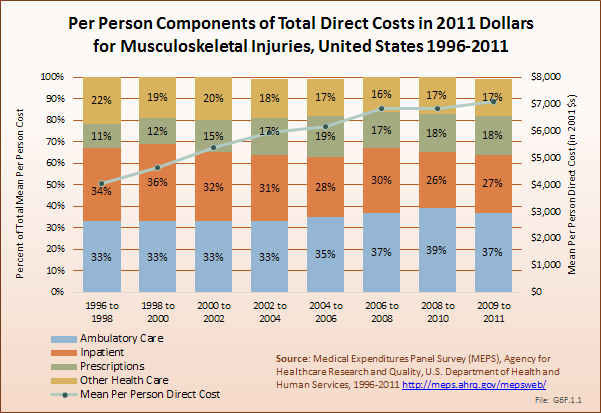
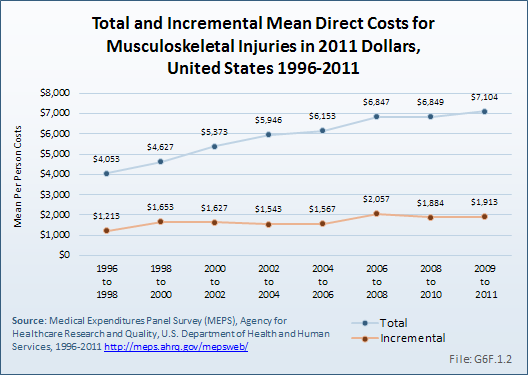
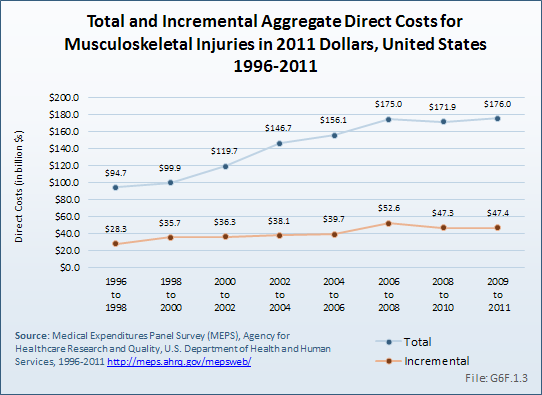
 Download as CSV
Download as CSV

